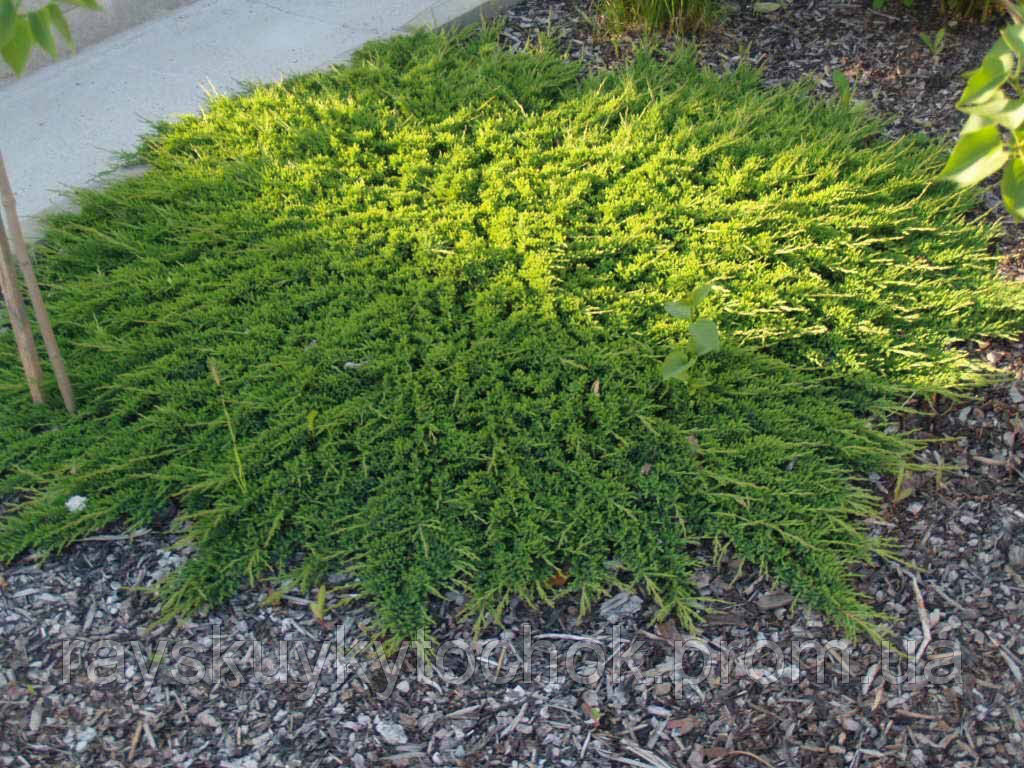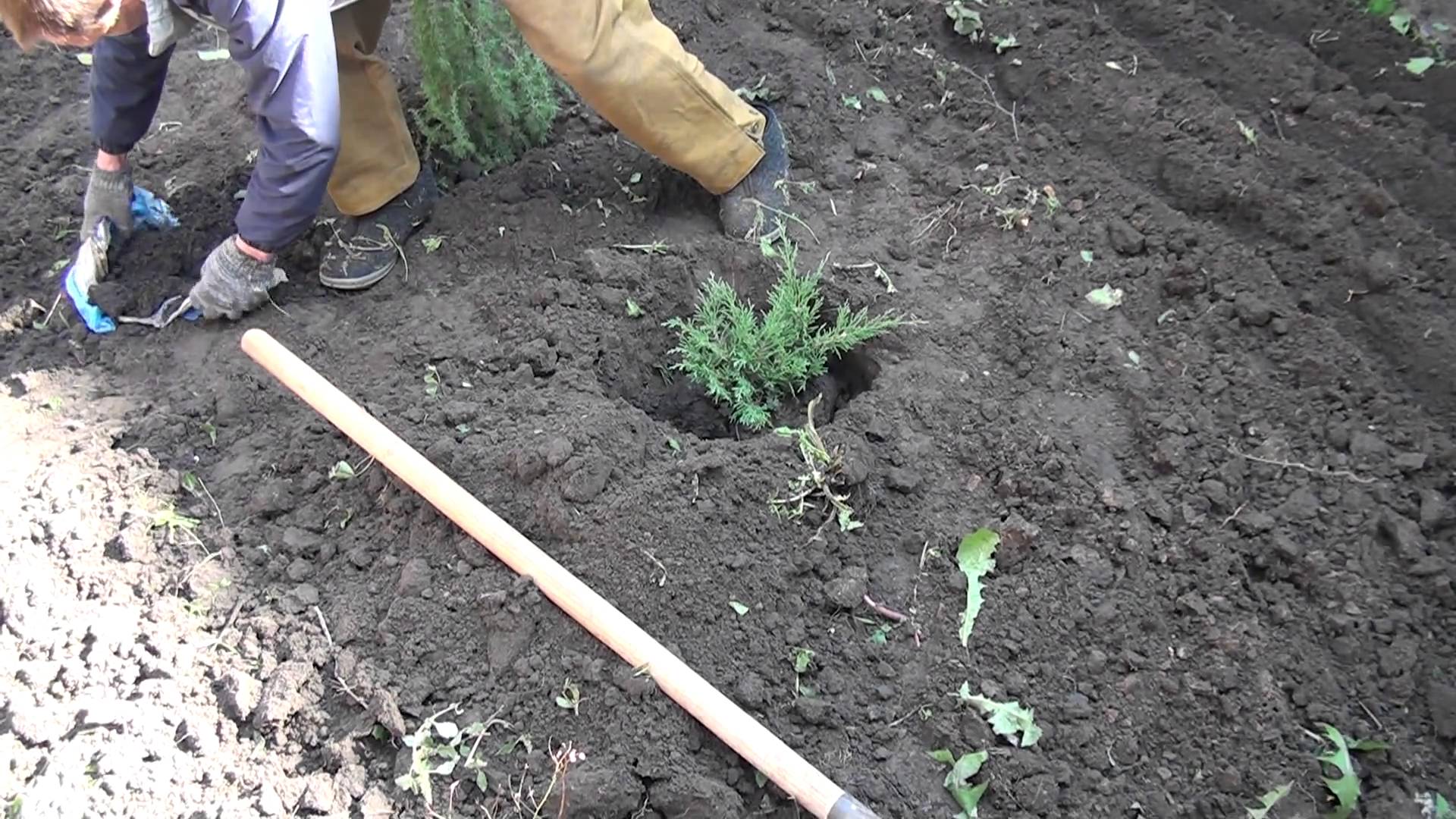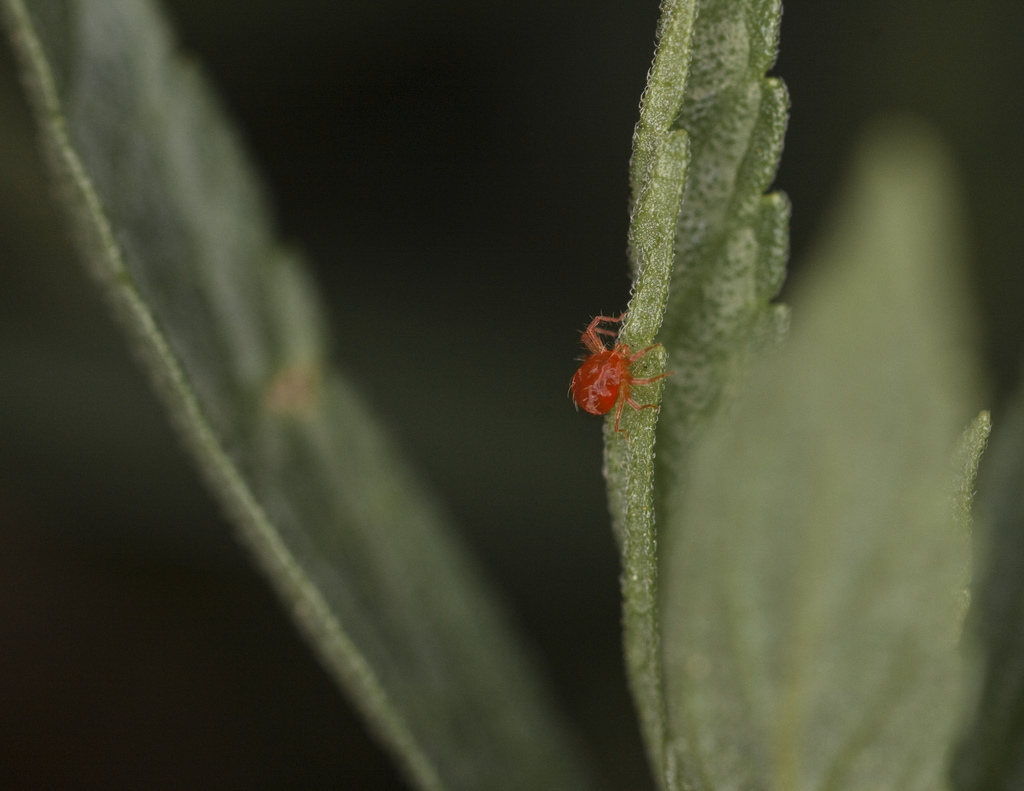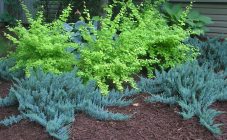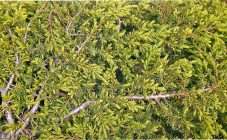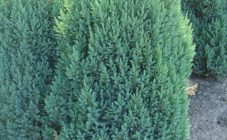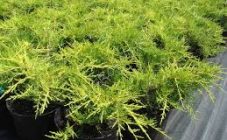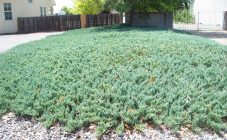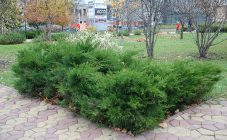Content:
Juniper is very often used in landscape design as a single or group plant. Since its color changes, it very favorably emphasizes any compositions that look like new with the onset of another season. Today, there are many varieties of this plant. Juniper variety Prince of Wales is one of the most popular varieties used in the decoration of plots and adjoining territories.
About agriculture
Juniper horizontal Prince of Wales is a shrub whose branching starts almost from the very root. Each branch is like a separate tree trunk. The shrub tolerates low temperatures perfectly, is remarkably adapted to the climatic conditions of Russia. It has a relatively slow growth rate. It can increase by 5, maximum 7 cm per year. It tolerates dry weather well. The needles of the plant change from rich green in the summer months to bronze-gold in the winter.
In addition to its remarkable external characteristics, juniper has medicinal properties. Until now, its needles and sawdust, produced from wood, are used in tinctures and decoctions of folk and traditional medicine. The essential oil extracted from juniper has an antiseptic effect on the body. It copes well with bacteria that attack the human respiratory system. In the 18th century, the fruits of the shrub were used to treat such serious diseases as: malaria, dropsy, disorders of the nervous system, etc. Also, in addition to using the plant's cones for medicinal purposes, they are added to many culinary masterpieces. The fruits have an original taste with a noticeable sourness. They are used as a spice added to meat and fish dishes. Juniper wood has been in demand in the art of joinery since ancient times. It is used to make furniture and jewelry.
Description of the variety
The Prince of Wales horizontal juniper is considered to be a short, slow-growing shrub of the Cypress family. Its needles are scaly, rich green in summer and dark green with elements of bronze in winter. During the transition period, the color of the needles is distinguished by a bluish tint. It grows up to 2 m wide. The height of an adult plant reaches 15 cm. It has a dense crown that spreads along the ground. New shoots grow vertically; upon reaching 7 cm, they also begin to creep. It is unpretentious to the soil, but it develops best on weakly acidic loams. Reacts well to watering in dry weather, but is quite resistant to it.
Plant propagation can be done in several ways.
The most common are:
- Reproduction by layering;
- Reproduction by seeds.
Juniper planting Prince of Wales
Juniper Prince of Wales loves places well lit by the sun. Although in the diffused shadow it feels good too. Depending on the size of the seedling, the interval between the planting pits is selected.It varies from 50 cm to 2.5 m. The depth of the planting pit is about 70 cm. It all depends on the size of the root system. The roots in the hole should be free.
It is best to plant a plant with an earthy clod. Firstly, this reduces the risk of damage to the roots, and secondly, the plant takes root faster, and therefore develops better. At the bottom of the planting pit, a drainage layer is laid out, which may consist of expanded clay, broken brick, small pebbles, etc. The drainage layer will protect the juniper root system from rot and stagnant water. The thickness of the drainage layer is recommended to be at least 20 cm. Juniper is not too whimsical to the soil, but develops better in slightly acidic loams. The seedling is covered with a soil mixture, which consists of peat, turf and sand, in a ratio of 2: 1, respectively.
Juniper care rules
For this type of green space, one feature is remarkable: the juniper grows best in poor soil. Based on this, it is worth noting that the prince of wales juniper does not like feeding and fertilizing. If you do not pay attention to this feature and make frequent feeding under it, the plant can run wild or even die.
Fertilizers are applied once a year, at the end of spring. When choosing between mineral and organic, preference should be given first. In the summer period, the shrub needs sprinkling, since the needles do not tolerate dry air very well. Also, the plant needs loosening. This will increase the volume of air flowing into the root system.
For the winter period, young shrubs that are under three years old should be covered. Burlap or agrofibre can be used to cover the horizontal juniper. It is better not to use greenhouse film. More mature plants do not need shelter, since they are quite strong. Regardless of the age category, all junipers for the cold season are sprinkled with a 20 cm layer of peat.
In order for the plant to become thicker and more beautiful every year, it is recommended to regularly prune its branches. Pruning is also needed when the juniper begins to change color from natural green to unnatural white. It is also necessary to remove dry and diseased plant branches.
Diseases and pests of juniper
Many varieties of juniper are extremely resistant to diseases and pests, due to the fact that they secrete natural, natural insecticides. But even in spite of this fact, shrubs sometimes get sick and are affected by pests. The most common pest of juniper is aphid. Not only does it suck the juices out of the plant very quickly, it also reproduces at a very high rate. Aphid control is carried out using insecticides. There are also folk methods, such as: treat the branches and needles of a shrub with horseradish tincture or black pepper decoction.
Another common pest is the spider mite. It entangles the branches and needles of the plant, blocking the access of oxygen. As a result, the plant begins to wither and then dies altogether. You can get rid of it by treating the plant with a solution of Bordeaux mixture. It is recommended to cut and destroy the affected branches.
Fusarium affects the root system of the shrub.This is a fungal disease that can be caused by poor-quality planting material, mechanical injuries, improper care, as a result of which stagnant water forms in the root system, and excellent conditions are created for the development of fungal diseases. If symptoms of fusarium were found, the soil in the root hole must be poured with fungicides. For preventive purposes, the plant can be treated 2 times a year with such preparations as: Skor, Champion, Chisty Sad, etc.
Use in landscape design
Juniper horizontal Prince of Wales is used in landscape design to complete compositions of rockeries or alpine slides. The Prince of Wales juniper stump allows you to use it in the decor of a summer cottage or personal plot as a living carpet. Since this plant variety is undersized, it is not suitable for hedges. This variety will decorate any rock garden, it will be a great addition to various decorations on the site.
Juniper Prince of Wales is a fairly friendly variety that gets along with any kind of coniferous and deciduous plants. It can be grown at home, on balconies and loggias, and enjoy the wonderful aroma of juniper.
